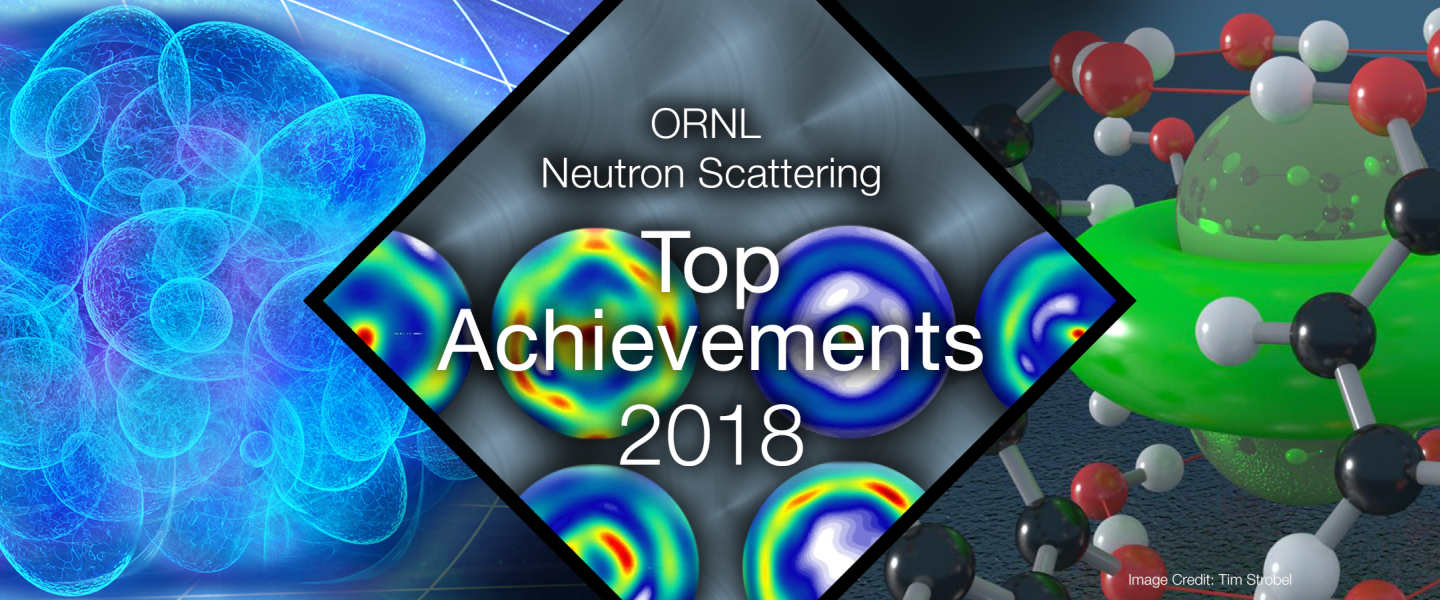ORNL’s Top neutron scattering achievements of 2018
The High Flux Isotope Reactor (HFIR) and the Spallation Neutron Source (SNS) at Oak Ridge National Laboratory (ORNL) are the Department of Energy’s (DOE’s) flagship facilities for world-leading neutron scattering research.
Each year HFIR and SNS are used by scientists from industry, academia, and government institutions to study aspects of energy and the structures of materials at the atomic scale that often cannot be observed with any other technique or at any other neutron facility.
In 2018, neutron scattering at ORNL provided fundamental insights into advances including improved polymers for transportation, new sequestration methods for mitigating air pollution, and a multitude of materials for energy storage and power generation applications.
Combined, HFIR and SNS produced over 100,000 beam time hours to more than 1,200 US and international researchers. A total of 1,188 experiments were conducted between the two facilities and approximately 700 scientific publications were produced; these included more than 500 instrument publications, many of which appear in high impact peer-reviewed journals.
The 2018 list was selected by a panel of scientists to highlight some of the year’s most impactful publications. These studies best represent the unique capabilities of HFIR and SNS in the areas of biology and soft matter, advanced materials such as those for batteries and electronic devices, quantum effects and quantum materials, and accelerator research.
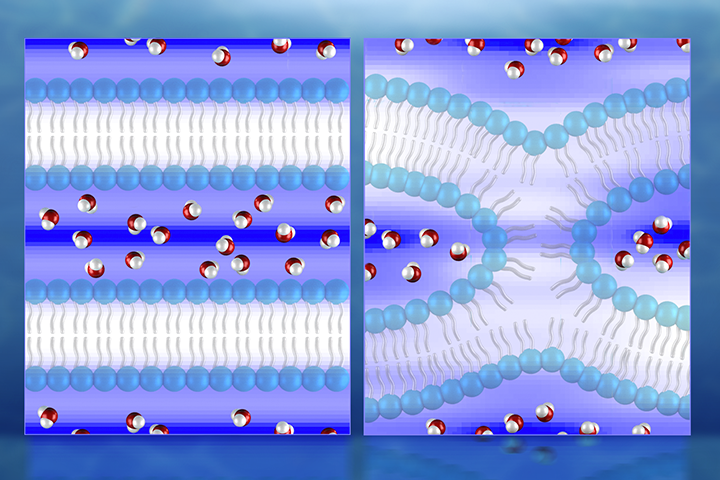 Distribution of water during membrane fusion fully mapped in 3D
Distribution of water during membrane fusion fully mapped in 3D
Journal of Physical Chemistry Letters— Neutron diffraction enabled the first-ever map of the 3D distribution of water between two lipid bilayers, making it possible to model how two cell membranes merge, or fuse into one. Cell membrane fusion occurs in many biological functions. A better understanding of the process could lead to improved methods of preventing infectious viral diseases, as well as new treatments for diseases such as osteopetrosis in which normal cell fusion is disrupted.
Work performed using EQ-SANS, SNS BL-6; and Bio-SANS, HFIR CG-3
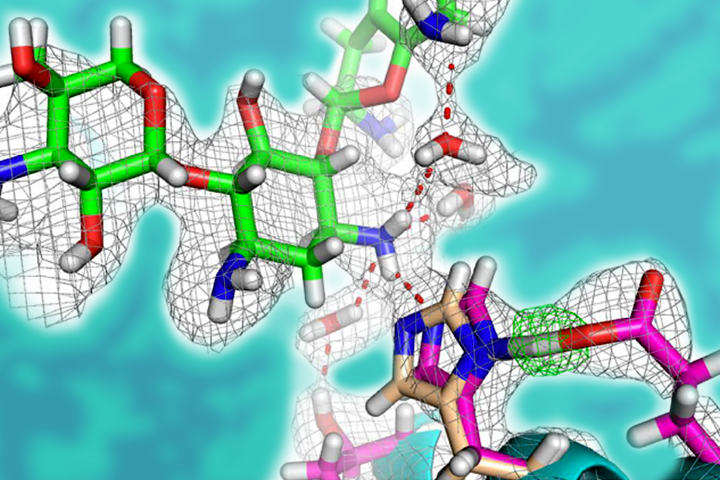 Novel catalytic mechanism of antibiotic resistance identified
Novel catalytic mechanism of antibiotic resistance identified
Science Advances— A combination of neutron and x-ray crystallography was used to determine the catalytic mechanism that enables acetyltransferase and other enzymes found in drug-resistant bacteria to chemically modify antibiotics, rendering them ineffective. A low barrier hydrogen bond between two active site residues was revealed using neutrons, as a result of their sensitivity to hydrogen and other light elements. The discovery will aid in the design of more effective antibiotics.
Work was performed using MaNDi, SNS BL-11B; and IMAGINE, HFIR CG-4D
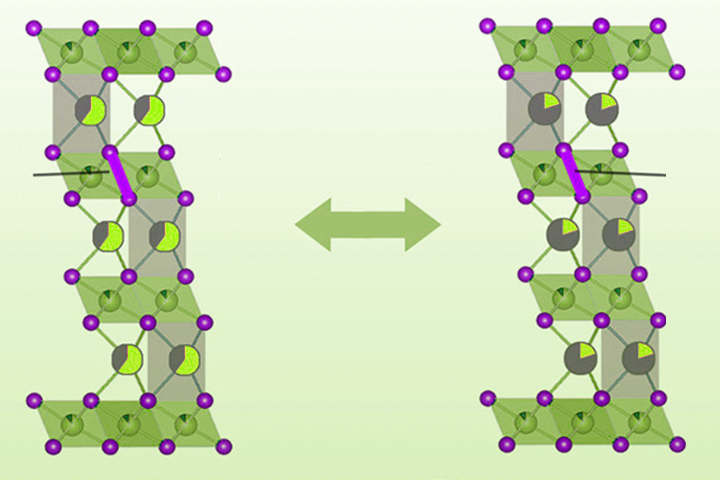 Mechanism of reversible anionic redox activity identified in Na-layered oxide battery cathodes
Mechanism of reversible anionic redox activity identified in Na-layered oxide battery cathodes
Joule— Neutron total scattering was used to identify the peroxo-like oxygen-oxygen dimer, the mechanism of reversible anionic redox reaction in a sodium-oxide cathode material (Na0.6[Li0.2Mn0.8]O2). Results indicate anionic redox activities can be used to promote the reversible charge-discharge capacity in layered oxide cathodes. The discovery contributes to DOE’s grand challenge goal of 100% electric vehicle use by demonstrating a new feasible mechanism of designing new high-capacity batteries.
Work was performed using NOMAD, SNS BL-1B
 Elastic properties of consumer composite polymer materials explained
Elastic properties of consumer composite polymer materials explained
Physical Review Materials— Polymers are essential components in countless products like automobiles, fire retardants, computers, and medical devices. Adding nanoparticles to polymers can greatly increase their performance. High-resolution quasi-elastic neutron scattering was used to study variations of polymer nanocomposite materials. Data revealed how density and chain stretching effects can be tuned to enable polymers to be pulled or stretched more without breaking.
Work was performed using BASIS, SNS BL-2; and CNCS, SNS BL-5
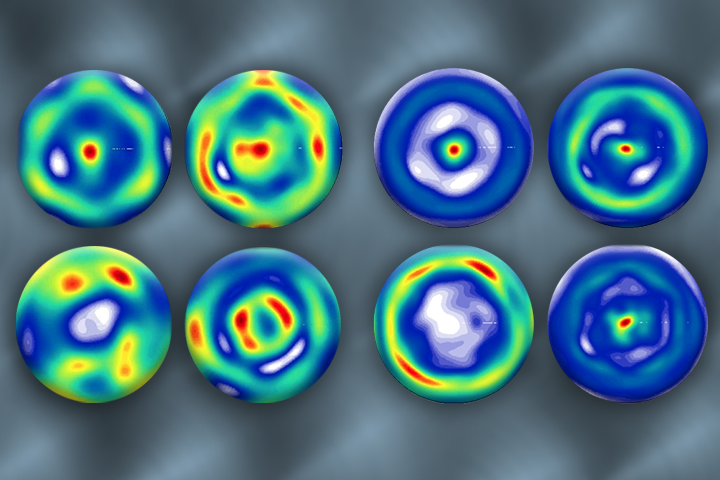 Path to better engineering alloys revealed
Path to better engineering alloys revealed
Materials Research Letters— Transformation-induced plasticity high-entropy alloys (TRIP-HEAs) are metal alloys with many different elements whose properties are improved through the application of mechanically induced changes. Neutrons investigated an iron-manganese-cobalt-chromium TRIP-HEA under tensile stress, revealing the material goes through four distinct structural stages before arriving at a final structure with remarkable strength and ductility. Potential use of HEAs include diverse applications including car bodies and aerospace components.
Work was performed using VULCAN, SNS BL-7
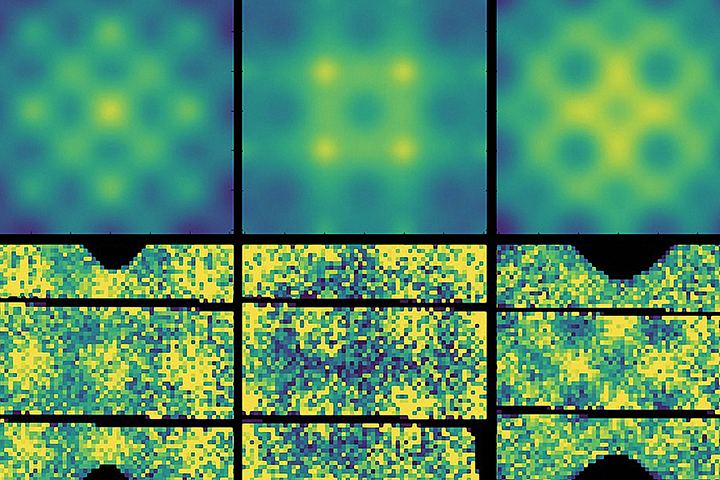 Model for strongly correlated magnets and superconductors validated
Model for strongly correlated magnets and superconductors validated
Science— Neutrons were used to validate a theoretical model by providing a detailed picture of the dynamic magnetic susceptibility of CePd3, a strongly correlated electron system. The discovery was possible because of the ability of neutrons to examine the spectrum of electronic fluctuations in the dimensions of momentum and energy. This new understanding increases the probability of correctly predicting superconductivity and magnetism in strongly correlated electron systems; it is expected to reduce the time and energy needed to design advanced superconductors that can transmit energy with minimal loss. The accurate model validation was enabled by the great number of thermal neutrons available at SNS and the expansive detector coverage of the ARCS instrument that allows it to measure large portions of reciprocal and energy space.
Work was performed using ARCS, SNS BL-18
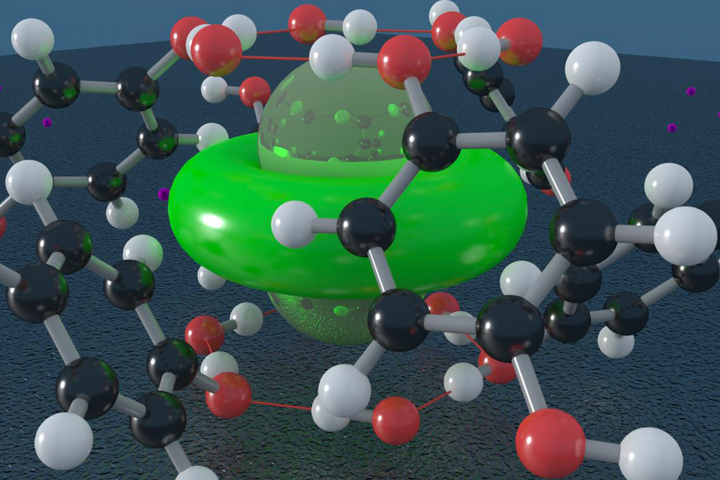
Quantum motions of confined hydrogen molecules detected
Physical Review Letters— Inelastic neutron scattering enabled direct in situ measurements of the quantum behavior of isolated molecular hydrogen atoms trapped in clathrate cages that hinder a hydrogen atom’s ability to rotate. This behavior is highly topical in the scientific community with regard to the understanding of quantum dynamics and the potential for hydrogen and energy storage applications. Neutrons can penetrate through metal high-pressure cells to measure the rotational dynamics of molecular hydrogen directly; no other technique could observe this behavior.
Work was performed using VISION, SNS BL-16B (Image credit: Tim Strobel)
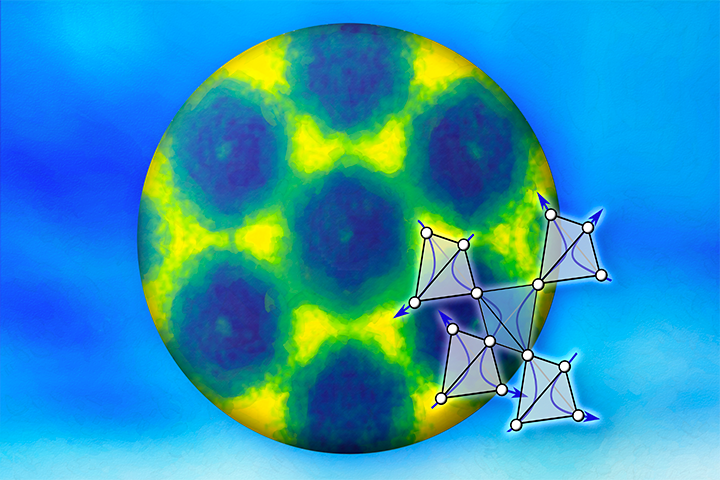 Evidence of quantum spin liquid behavior rarely found in a 3D magnetic material
Evidence of quantum spin liquid behavior rarely found in a 3D magnetic material
Nature Physics— Neutrons revealed bizarre magnetic behavior believed to be a possible quantum spin liquid state rarely found in a 3D material. Quantum spin liquids are exotic states of matter in which magnetism continues to fluctuate at low temperatures instead of “freezing” into aligned north and south poles as with traditional magnets. The quantum behavior observed is consistent with theoretical models and indicates the material has the right ingredients for fractionalized magnetic excitations that could be harnessed for quantum information technologies. The measurements were uniquely enabled by HYSPEC’s wide range of energy and momentum transfers afforded by the time-of-flight technique.
Work was performed using HYSPEC, SNS BL-14B
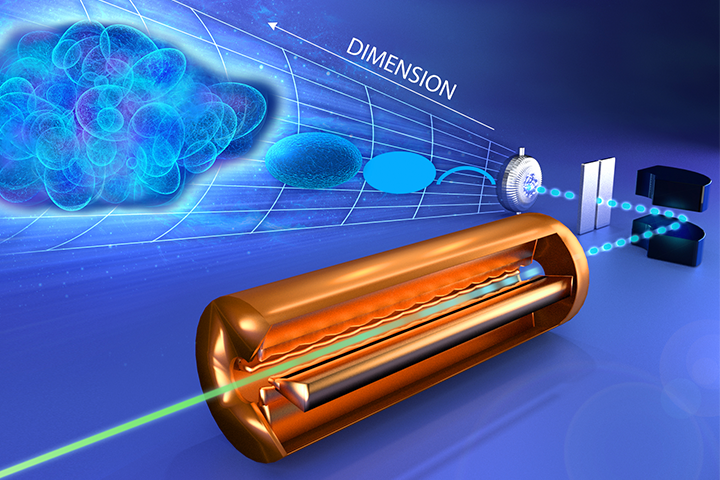 First ever 6-dimensional measurement of a beam in an accelerator completed
First ever 6-dimensional measurement of a beam in an accelerator completed
Physical Review Letters— Researchers from ORNL and the University of Tennessee–Knoxville conducted the first-ever accelerator beam measurement in six dimensions—three spatial coordinates for the location and three coordinates to track motion or velocity. The measurement gives critical, long-awaited information required for understanding and predicting beam evolution in an accelerator. Furthermore, the information is expected to help scientists eventually design accelerators that can achieve 100 megawatts of power and above. ORNL’s research Beam Test Facility is the only place where such work can be performed.
Work was performed at the University of Tennessee and ORNL Beam Test Facility
HFIR and SNS are DOE Office of Science User Facilities. UT-Battelle LLC manages ORNL for DOE’s Office of Science. The Office of Science is the single largest supporter of basic research in the physical sciences in the United States and is working to address some of the most pressing challenges of our time. For more information, please visit http://science.energy.gov/.—by Jeremy Rumsey


